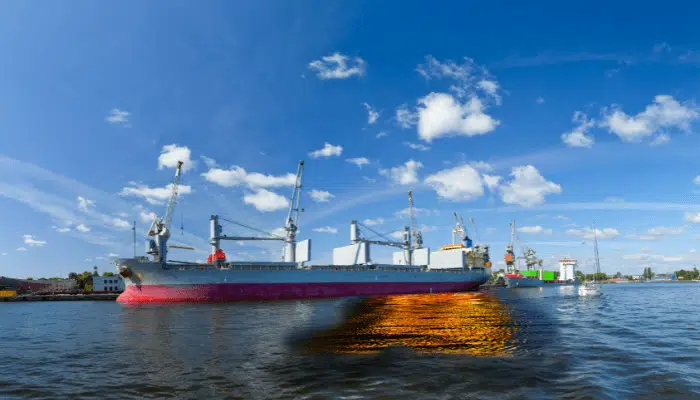The Global Maritime Emission Trading System and Its Effects on the Shipping Industry
Global Maritime Emission Trading System is a system that has been applied in a manner consistent with its purpose or design that is capable of being done with means at hand and circumstances as they are, especially for the greenhouse gas emissions in the maritime transport sector. The system requires constant monitoring of the emissions of each ship from international shipping organization and an equivalent amount of emission allowances to be surrendered to the scheme administrator. This emission trading system is assumed to have huge impacts on the shipping sector and on the economies of regions and country groups. Read on to learn more about its features in greater details.
Requirements:
The European Union Emissions trading scheme provides a global cap and trade system for carbon credits.
In order to make international shipping contribute to climate change extenuation by a cost-efficient reduction of greenhouse gases the scheme must:
- Target real emissions of CO2 calculated on the basis of fuel consumption data
- Allow marginal equivalent incentive
- Aim at gradual expansion into global coverage
- Avoid all the complexities of allocating free emissions allowances
- Be non-discriminatory and be applied to all vessels irrespective of its carrier flag
- Comply with Annex 1 countries and with developing nations too
- Follow the context of inter-port competition
- Assure legal, political and institutional acceptability
- Be non- evasive and easily enforced, administered and monitored.
How does global Maritime Emission Trading System work?
The German Federal Environment Agency had commissioned a Nature Associates’ report proposing the creation of a CO2emissions trading system for international shipping called the Maritime Emissions Trading Scheme (METS) that could be linked to the European Emissions Trading System (EU ETS) along with other existing or to be emerged regional or national cap and trade schemes. In METS, the two responsibilities placed on the vessels are:
- Monitoring of CO2 emissions and reporting in a verified report to the METS Registry
- Surrender an amount of allowances equivalent to the emissions reported
CO2 emissions monitoring is executed on the basis of fuel consumption, by establishing the amount of fuel on board at the beginning of the reporting period, the amount bought during the reporting period and the amount left at the end of the reporting period. The collected data can be multiplied by the respective fuel emissions factor to calculate emissions. Equivalent allowances are earned during auction, at carbon trading markets and also by free allocation registering.
The METS Registry is responsible for:
- Receiving and administering emission reports
- Receiving and administering surrendered allowances
- Auctioning of allowances
- Maintaining records of compliance status of all ships
- Managing funds
- Sending out account statement to Flag State on yearly basis
General Principles:
Emission trading is an incentive-based instrument purported to achieve environmental objectives. A global scheme covering all shipping emissions would be more environmentally effective but is limited to a few countries and country groups in order to reduce undesirable negative impacts.
Global maritime emission trading system is ideally an open system and helps in reducing price volatility as the volume of allowances and the number of potential participants is much larger. This provides market transparency and liquidity.
Allocating allowances is as much important as monitoring, reporting and verifying emissions as free allocation lowers the incentive to reduce emissions, also auctioning is economically beneficial. Hence a balance between free allocation and auctioning might prove beneficial for economic efficiency and alleviate administrative burden.
Impacts on Shipping Sector:
The global maritime emission trading system affects the cost structure of maritime transport. This depends much on the type and size of the vessel, the fuel price and the allowance price. The total cost may increase up to 16% while the operational cost may increase by 14 to 22%. However the import prices for petroleum products and manufactured goods do not get much affected.
Whatsoever the costs increase, this would lead the shipping industry to employ more efficient technical and operational fleet to reduce carbon emission which will eventually help in reducing the actual cost increase. In order to reduce carbon emission, a ship must:
- Shift to a fuel will low emissions of carbon (well- to-propeller)
- Supplement fuels with wind-propulsion and/or solar power
- Improve operations (maintenance of hull, engines and propellers, choice of operational speed, etc)
- Upgrade existing equipment by retrofitting (engines, propellers etc)
- Install new, more fuel-efficient, tonnage.
Conclusion:
By adopting technical and operational measures regarding the carbon credit the global maritime emission trading system has become a net-buyer of emission allowances, assisting the shipping industry to contribute to climate change mitigation by also funding for the cause and concerned operations carried out by the United Nations and its relevant subsidiary organisations. With these responsibilities the emission trading system would certainly improve the status of shipping in the eyes of the international community.
You may also like to read-The Green Marine Environmental Program: A General Overview
References:natureassociates, bmu, ce
Do you have info to share with us ? Suggest a correction
Subscribe To Our Newsletters
By subscribing, you agree to our Privacy Policy and may receive occasional deal communications; you can unsubscribe anytime.




